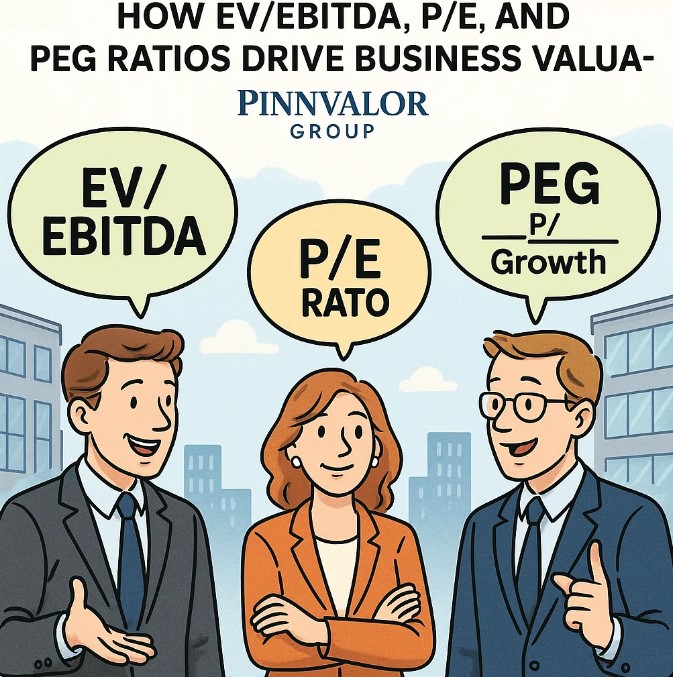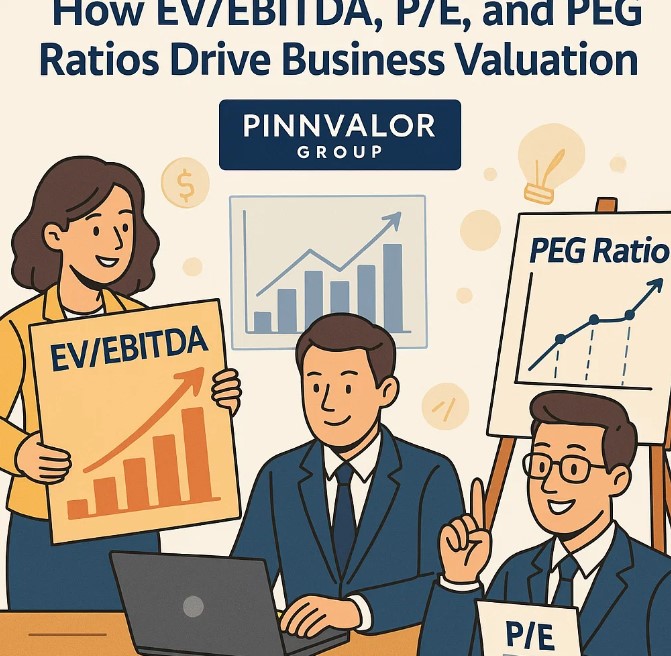
Decoding Market Multiples: How EV/EBITDA, P/E, and PEG Ratios Drive Business Valuation
In the world of finance and investment, valuation is everything. Whether you're a private equity investor, a corporate strategist, or an individual trader, understanding a company's worth is essential for making informed decisions. Among the many methods available, market multiples stand out for their simplicity and relative ease of comparison across companies and industries. This blog explores three of the most commonly used valuation multiples—EV/EBITDA, P/E, and PEG—and how they help decode a business's true value.
Are your valuation metrics telling the full story?
EV/EBITDA strips away capital structure noise, while PEG adds growth perspective. Use multiples wisely to uncover true business value.
What Are Market Multiples?
Market multiples are financial ratios that compare a company’s market value to a key financial metric such as earnings, sales, or book value. The idea is simple: similar companies should trade at similar multiples. By comparing a company's multiple to that of peers, investors can gauge whether it is undervalued or overvalued.
1. EV/EBITDA – Enterprise Value to EBITDA
What It Measures:EV/EBITDA compares a company’s Enterprise Value (EV)—which includes equity, debt, and cash equivalents—to its Earnings Before Interest, Taxes, Depreciation, and Amortization (EBITDA). This ratio provides a capital structure-neutral way to assess value.
Why It Matters:- Neutralizes capital structure: Unlike P/E, which is influenced by debt levels, EV/EBITDA considers both debt and equity.
- Ideal for cross-company comparisons: Especially useful in M&A or for comparing companies with different financial leverage.
- Focuses on operating performance: Strips out non-operating effects like depreciation and amortization.
A lower EV/EBITDA may indicate that a company is undervalued—however, industry norms must be taken into account.
2. P/E Ratio – Price-to-Earnings
What It Measures:The P/E ratio compares a company’s current share price to its earnings per share (EPS). It's arguably the most recognized valuation metric.
Why It Matters:- Simplicity and popularity: Commonly used by retail and institutional investors.
- Snapshot of market sentiment: High P/E implies high expectations for future growth; low P/E may signal undervaluation or risk.
- Best for mature, profitable firms: Especially relevant when earnings are stable and consistent.
A high P/E doesn’t always mean overvaluation—it may reflect investor confidence in growth. Conversely, a low P/E might point to risk or stagnation.
3. PEG Ratio – Price/Earnings to Growth
What It Measures:The PEG ratio refines the P/E by factoring in expected earnings growth. It’s calculated as:
PEG = P/E ÷ Annual EPS Growth Rate
Why It Matters:- Adds context to P/E: A company with a high P/E but also high growth may still be reasonably valued.
- More dynamic than P/E alone: Helps avoid overpaying for "growth traps."
- Useful for growth investors: Helps identify stocks where earnings growth justifies the premium.
A PEG ratio close to 1 suggests that the stock is fairly valued relative to its growth. Below 1 may indicate undervaluation; above 1 might signal overvaluation.

Comparing the Multiples: When to Use What?
| Metric | Best For | Strength | Limitation |
|---|---|---|---|
| EV/EBITDA | M&A analysis, capital-intensive industries | Capital structure neutral; focuses on operations | Ignores capex and working capital |
| P/E Ratio | Established, profitable firms | Easy to understand and apply | Affected by accounting choices and debt levels |
| PEG Ratio | High-growth companies | Adjusts for growth; refines P/E | Sensitive to growth forecasts |
Real-World Application: An Illustrative Example
Imagine two companies in the same industry:
- Company A: P/E of 30, earnings growth of 10% → PEG = 3.0
- Company B: P/E of 20, earnings growth of 20% → PEG = 1.0
Although Company A has a higher P/E, its slower growth makes it more expensive on a PEG basis. Company B appears to offer better value when growth is considered.
Conclusion: Multiples Are Tools, Not Absolutes
Market multiples like EV/EBITDA, P/E, and PEG are invaluable tools for valuation—but they’re not infallible. Used in isolation, they may mislead. However, when combined with a qualitative understanding of the business, industry trends, and macroeconomic context, they can provide powerful insights into whether a company is a hidden gem or a value trap.
Understanding and applying these metrics wisely can help investors make more strategic, data-informed decisions—and ultimately, unlock greater value in their portfolios.
